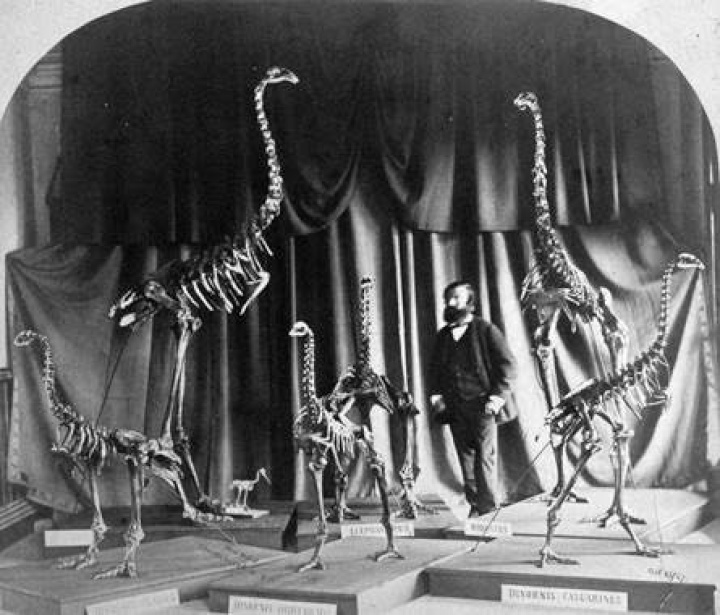Canterbury Museum marks 150th Birthday
Canterbury Museum marks 150th Birthday

On Sunday 3 December, Canterbury Museum marks 150 years since its founder, Sir Julius von Haast, opened the doors to the public.
German-born Haast had begun collecting specimens for a possible museum when he began his role as provincial geologist in 1861. As geologist he examined, explored and reported on the mineral potential of the Canterbury region which, at the time, also included Westland. Making important discoveries about the geology, topography and botany of the province, Haast quickly assembled a wealth of material that demonstrated the natural history of the area.
In 1865, with the discovery of moa remains at Glenmark Station, near Waipara in North Canterbury, Haast and several others excavated hundreds of bones which would be destined for the new Museum’s collection and for a programme of exchanges with leading museums around the world.
By 1867, there was a strong public call for access to the treasures Haast had accumulated in his Government-funded role. When it first opened to the public on 3 December 1867, the Museum was housed in three rooms of the Canterbury Provincial Council Buildings on Durham Street. Visitors were welcomed on Tuesdays, Thursdays and Saturdays from 11.00 am to 3.00 pm and Haast often accompanied them through the displays, taking time to share his favourite collections and stories.
During its first 7 months, an estimated 110 people visited the Museum each week. On display were geological and zoological specimens including an extraordinary display of moa skeletons.
Within days, there were calls for a permanent and purpose-built museum. It took over two years and £1,683 in Government and subscriber funds to construct a suitable stone building. Opening to the public on 1 October 1870, the Benjamin Mountfort-designed building on Antigua Street, now Rolleston Avenue, is still at the heart of the current buildings.
Museum Director
Anthony Wright says, “When it opened, the Museum housed a
remarkable 7,887 treasures. Today the Museum attracts more
than three-quarters of a million visitors each year and is
home to 2.3 million collection items which help us tell a
myriad of stories about Canterbury, New Zealand and the
world.”
ends


 NZ Amateur Sport Association: 22 Amendments Proposed For 2022 Act Lodged On 22 November
NZ Amateur Sport Association: 22 Amendments Proposed For 2022 Act Lodged On 22 November Auckland University of Technology: Reading Helps Children Face A Difficult Future
Auckland University of Technology: Reading Helps Children Face A Difficult Future PATHA: Puberty Blocker Evidence Brief Affirms Aotearoa’s Approach
PATHA: Puberty Blocker Evidence Brief Affirms Aotearoa’s Approach Tataki Auckland Unlimited: Into Ocean & Ice - Unveiling Antarctica's Past And Present
Tataki Auckland Unlimited: Into Ocean & Ice - Unveiling Antarctica's Past And Present Health Coalition Aotearoa: Urgent Action Needed To Address Aotearoa’s Shameful Household Food Insecurity
Health Coalition Aotearoa: Urgent Action Needed To Address Aotearoa’s Shameful Household Food Insecurity GPNZ: 2023/24 New Zealand Health Survey - One Quarter Of Kiwi Adults Unable To Access General Practice
GPNZ: 2023/24 New Zealand Health Survey - One Quarter Of Kiwi Adults Unable To Access General Practice